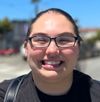Neighborhood Artist Bonnie Ora Sherk's Body of Work Displayed in New Exhibit
The influential ideas and work of A Living Library's founder is on display in a new exhibit.

Bonnie Ora Sherk pioneered a way to show the world how to highlight nature while living in an asphalt jungle.
Sherk spent most of her life in San Francisco’s Bernal Heights where she launched numerous initiatives such as The Farm and A Living Library, two lasting efforts to restore native habitats and educate the public about ecology. She was a regular at the District 11 Council meetings to promote ALL's work in the Ocean View-Merced Heights-Ingleside and Excelsior-Outer Mission neighborhoods.
Sherk was a multifaceted artist and community educator whose focus was reimagining our everyday spaces to be more lively and environmentally friendly if not ostentatious. She once set up grassy picnic areas with live animals under freeways and would go on to establish agricultural hotspots throughout the city. Now, selections of her work are on display for free at the Fort Mason Center for Arts & Culture from Jan. 13 to March 10.
Sherk, who passed away in 2021, was born in New Bedford, Mass., but grew up in Montclair, New Jersey, until she moved to San Francisco with her husband, David Sherk, in the late 1960s where she primarily lived in the Bernal Heights. She graduated from Rutgers College and went on to obtain a Masters in Fine Arts at San Francisco State University.
“Bonnie really teaches us that you can think about where you live differently,” Fort Mason Director of Arts Programming and Partnerships Frank Smigiel said. “You don’t have to accept all the hard surfaces that surround you and you can maybe reimagine your community either as an artist with these temporary performance projects or you can reimagine your community as an activist in concert with a bunch of other people trying to transform built spaces.”
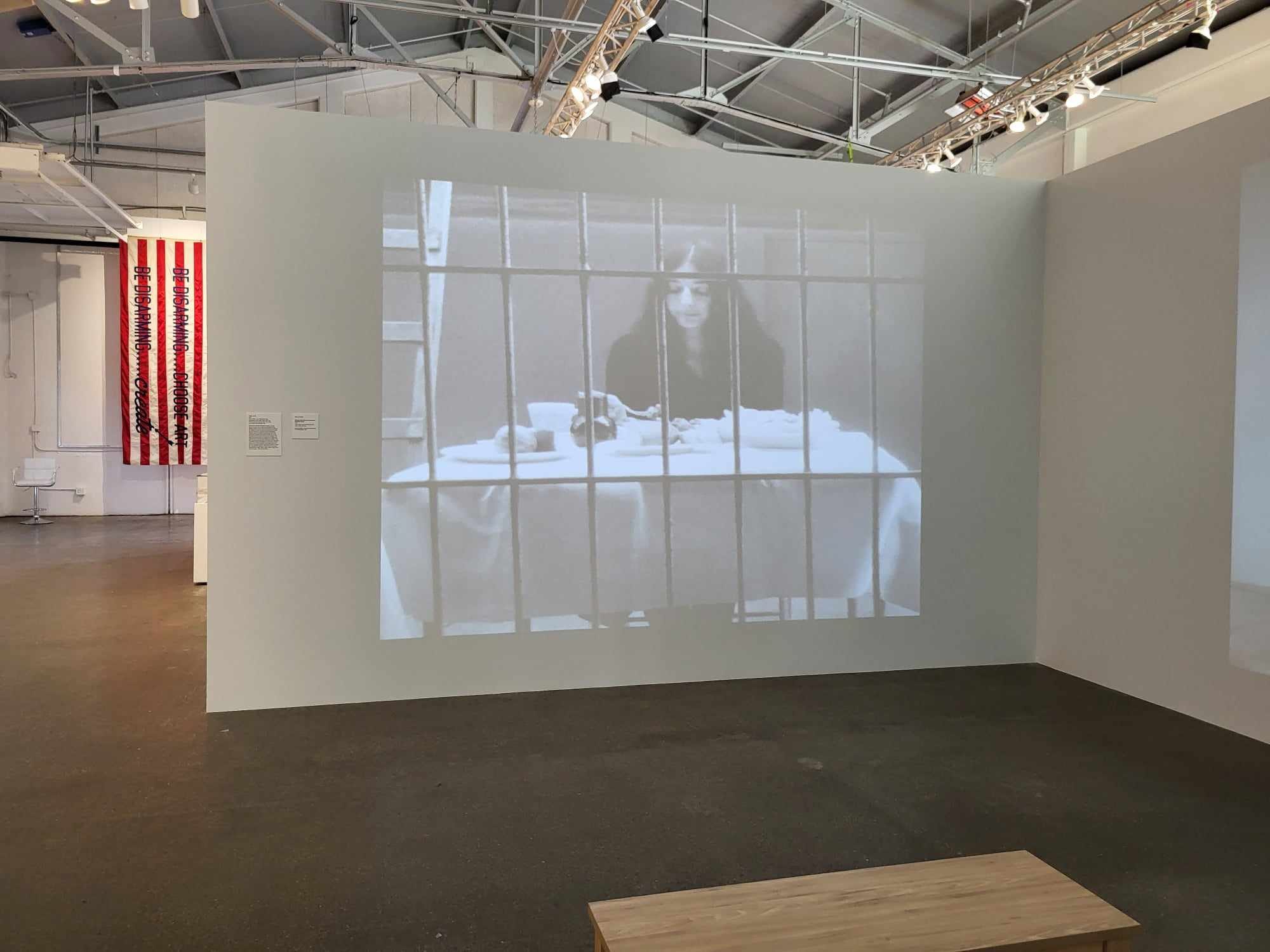
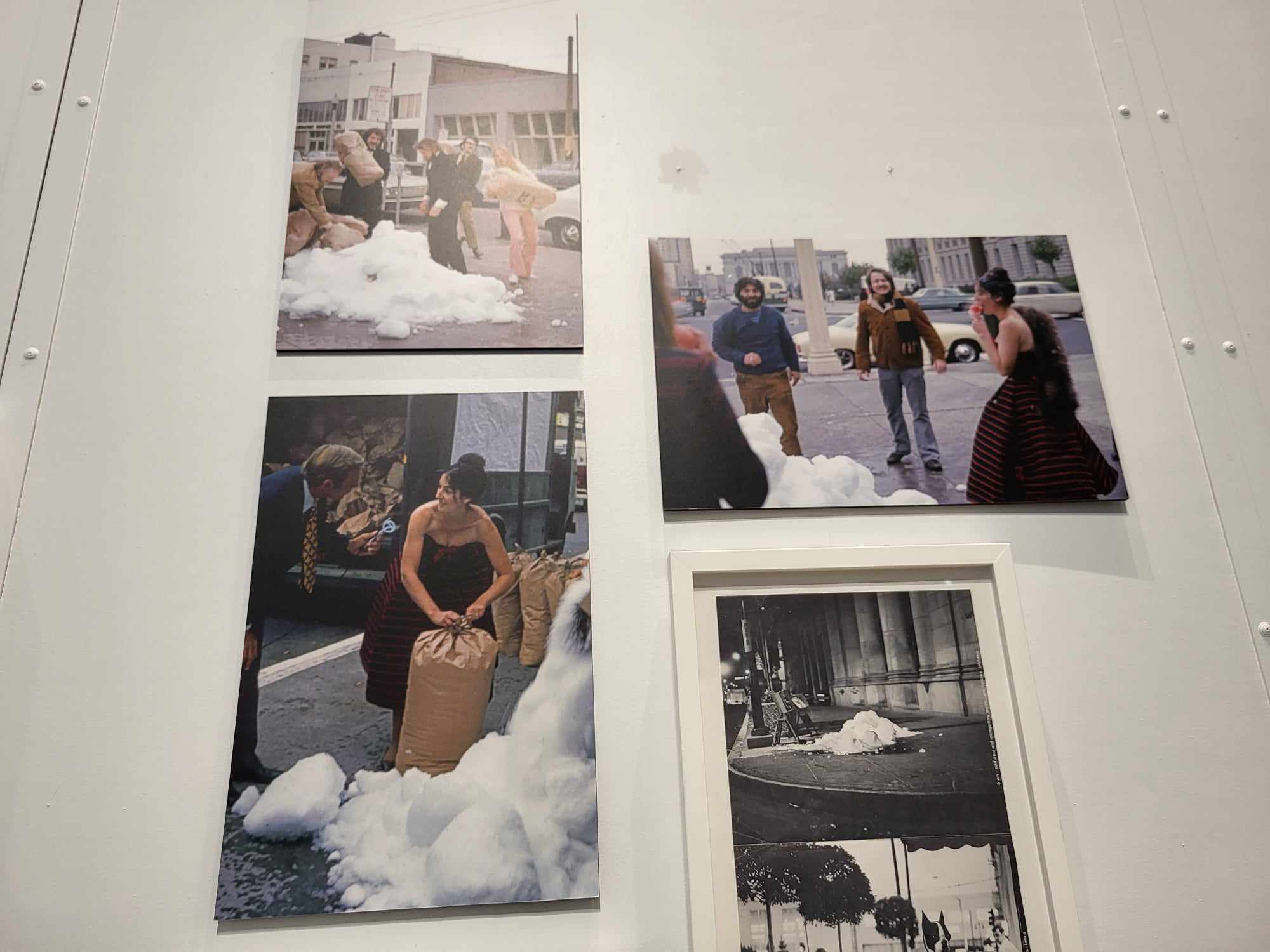
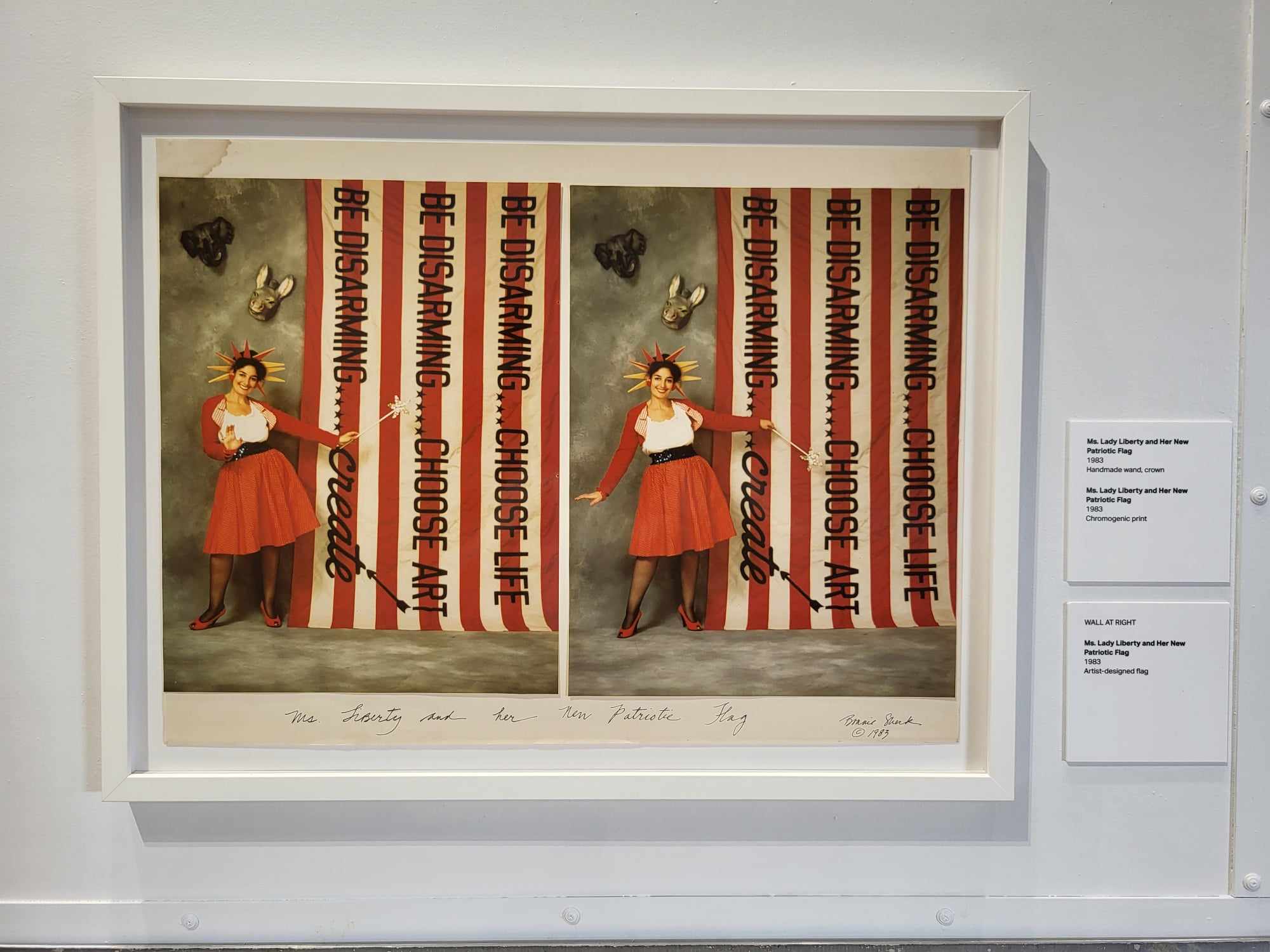
Bonnie Ora Sherk's projects "Public Lunch 1971", "Portal Parks I-III", "Snow Job" and "Ms. Lady Liberty and Her New Patriotic Flag" on display. | Anne Marie Kristoff/Ingleside Light
The exhibit “Bonnie Ora Sherk: Life Frames Since 1970” was curated by Tanya Zimbardo, a San Francisco-based contemporary art curator who also worked with Sherk in the past. The exhibit centers on Sherk's work from the 1970s to 1990s that depicts the evolution of her mixed-media ideas in transforming abandoned spaces into functional neighborhood programs and art installations to creatively enhance ordinary uneventful areas.
Sherk’s work was moved and cataloged from her Bernal Heights home, Smigiel said, with help from interns from the University of San Francisco’s Museum Studies Department and San Jose State University’s Library Science program.
Displayed with her collages and handwritten notes of ideas is her series “Portable Parks I-III,” which is newly transferred film and videos for pieces such as “Public Lunch 1971” and “Sitting Still”.
“Before her passing, Sherk enjoyed a resurgence of interest in her pioneering work in the public sphere and its legacy for contemporary art, from ecofeminism to social practice,” Zimbardo said in a news release. “It is an honor to be able to offer an in-depth look at the evolution of her ideas, which will resonate with a range of community gardening, food justice and environmental sustainability initiatives today in the Bay Area.”
Another key piece of Sherk’s career that’s on display is the Crossroads Community, known as The Farm, which was located in the former Army Street freeway interchange. It's now Highway 101 at Cesar Chavez Street and Potrero Avenue and is now the Potrero del Sol Park. Sherk and others cultivated the educational multi-art community agricultural center with a functional farm and garden for neighborhoods to come together and learn through various ecological and creative programs.
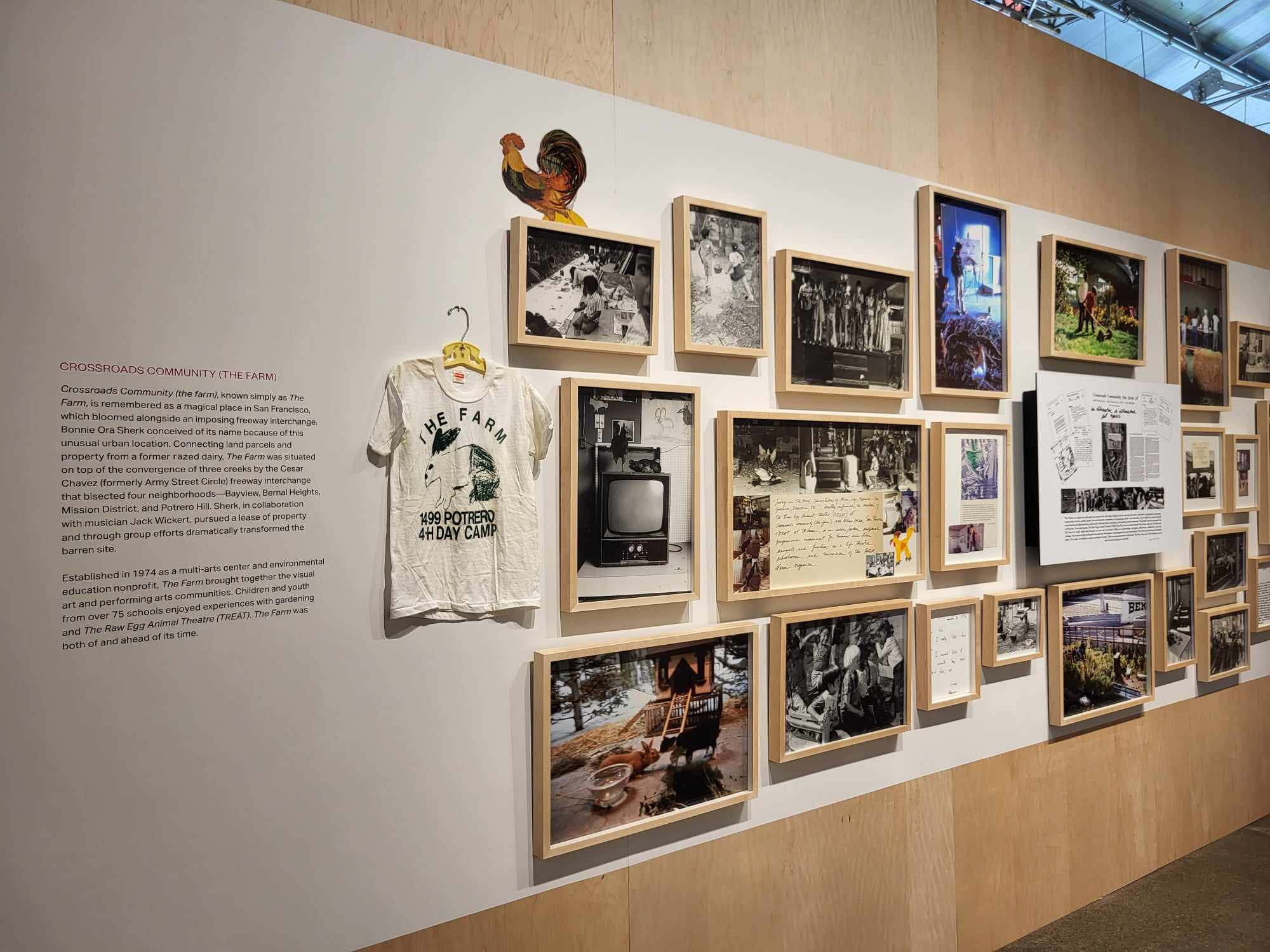
Visitors are shown arrangements of event flyers and news clippings line the walls in addition to tv news coverage.
“We would walk down into the farm and it was a wonderful experience because I grew up on a farm and it was such a pleasure for me to give my daughter that chance to see animals and things growing right in the middle of the city,” one San Francisco caller said on KQED’s Forum podcast on Jan. 31. “It was in such a surprising place.”
The exhibit concludes with a final walk through her most recent and active life project and nonprofit, A Living Library, with installations that can be found throughout San Francisco and several locations in New York. Displayed are Sherk’s concept drawings for ALL. They focus on how to blend ideas of interactive learning libraries built into concrete slabs with gardens, youth programs and community outreach and their real life applications.
ALL has strived to continue Sherk’s work and has maintained several living libraries in the city like near Balboa High School and even a Bernal Heights walking tour of the gardens.
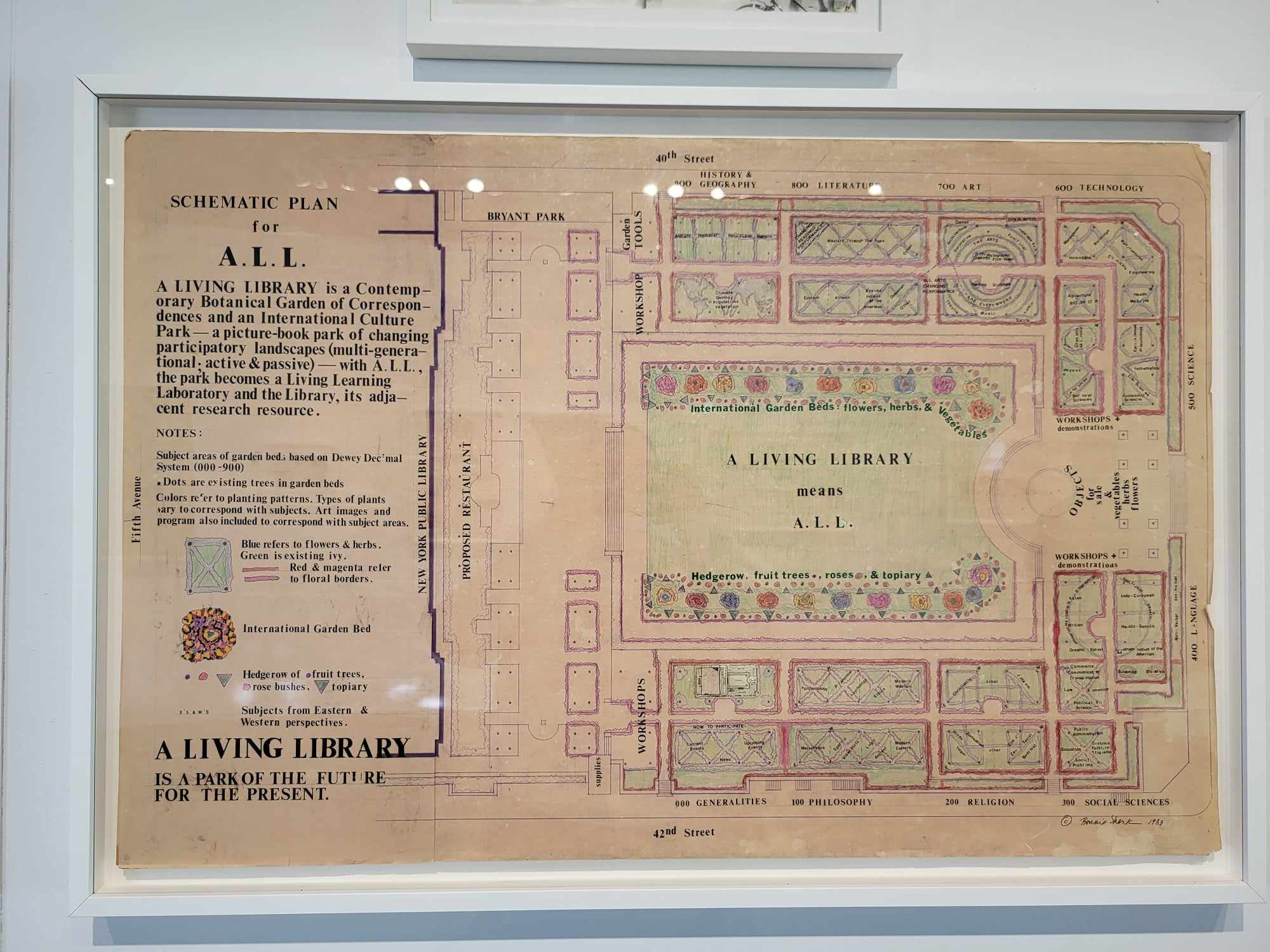
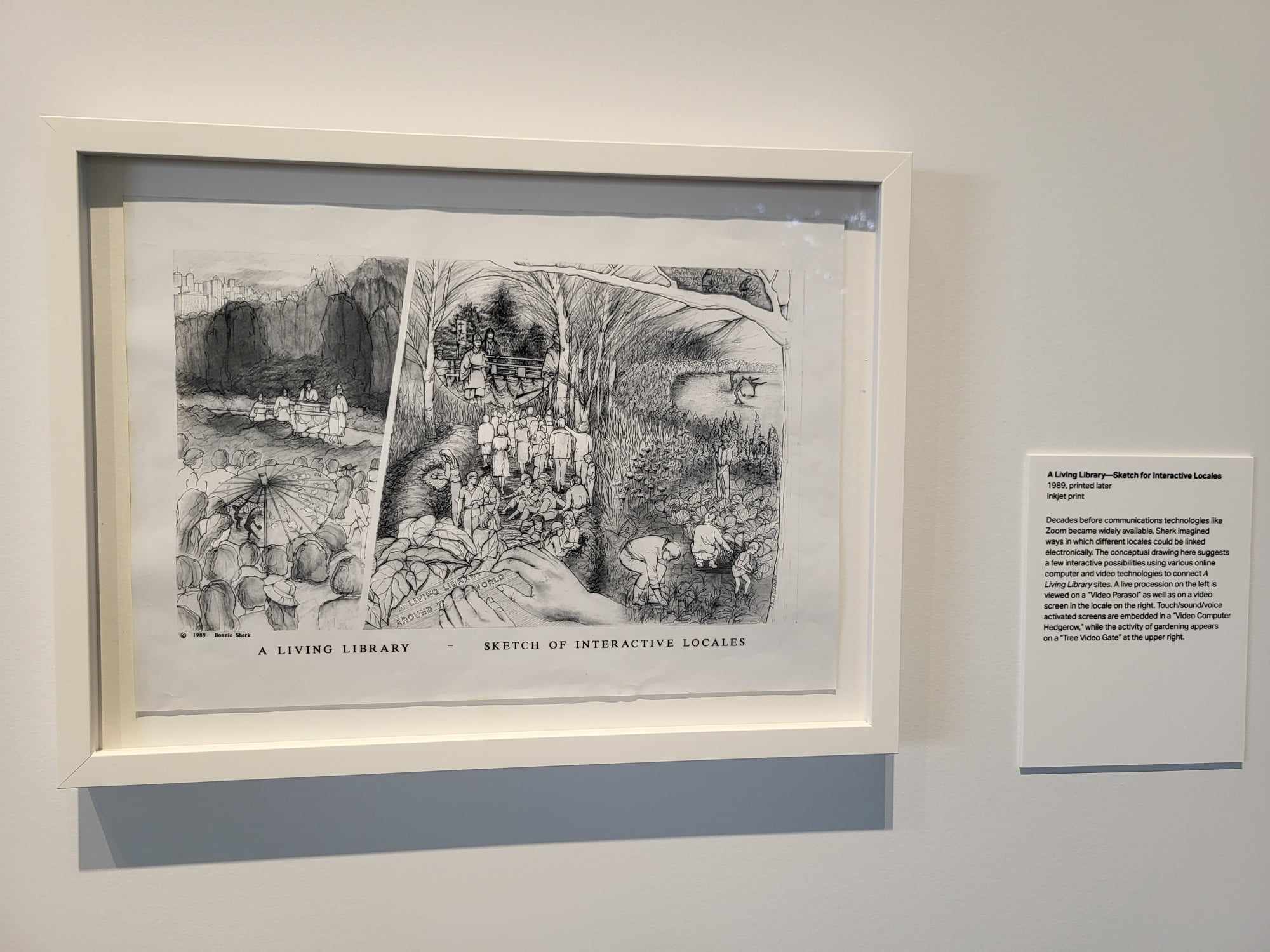
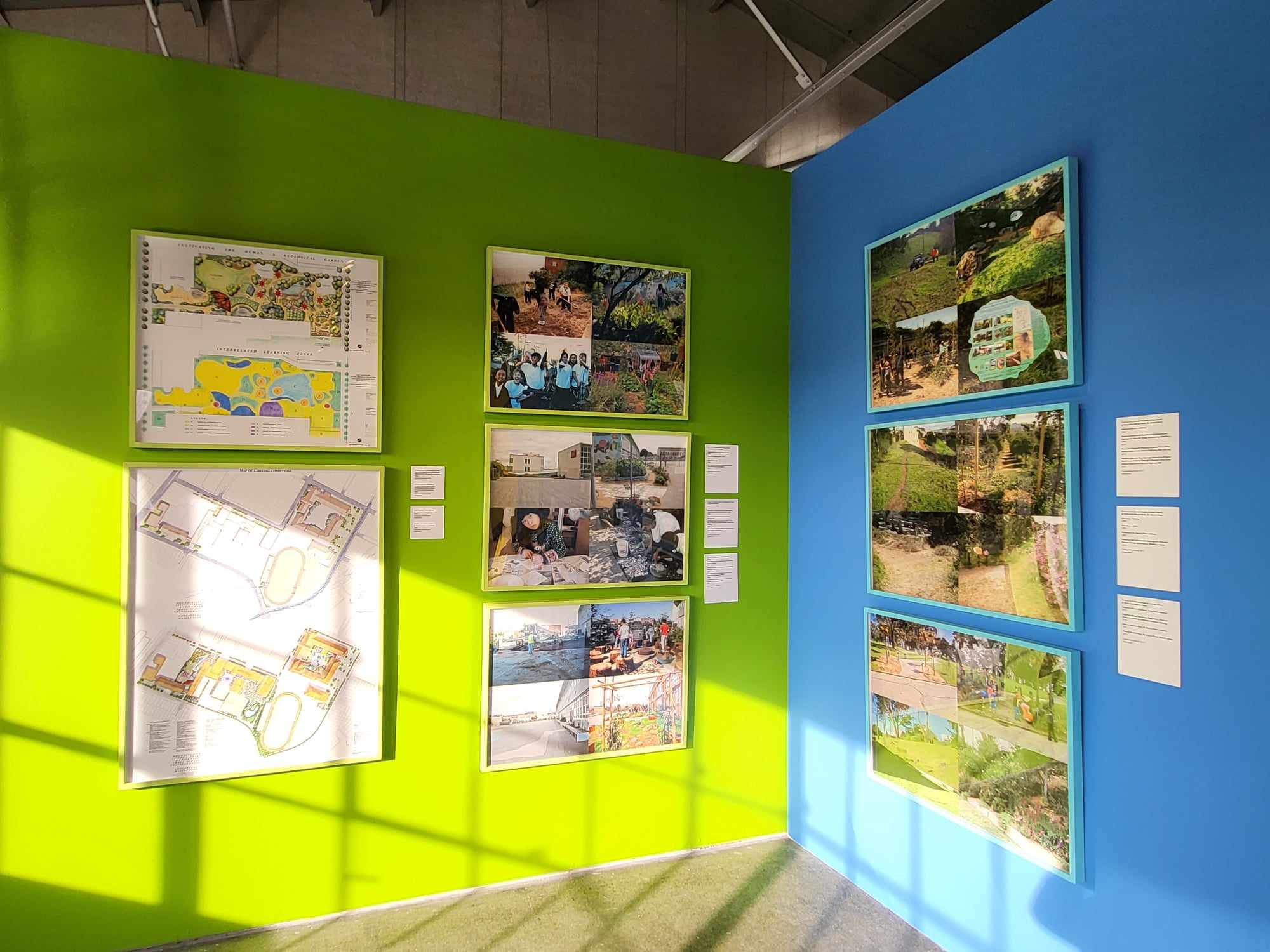
A Living Library concept art for New York City and real-life execution throughout San Francisco. | Anne Marie Kristoff/Ingleside Light
ALL Project Coordinator Luke Daenen said the exhibit has led the organization to re-engage the community and consider its legacy.
“I know it means a lot to Bonnie’s family,” Daenen said. “To our community, it's been really great to stop and think about the founding ideas and background of the [organization] because it’s been away in banker’s boxes and archived. It really helps with the thinking process of where we are."
"The whole social like human side of reconnecting with people connected to Bonnie has been really magical,” Daenen added.


